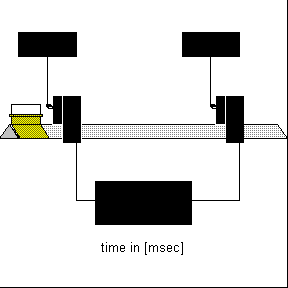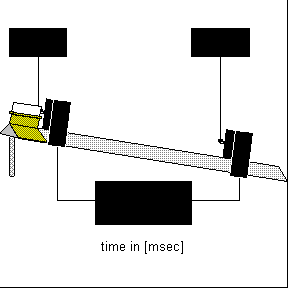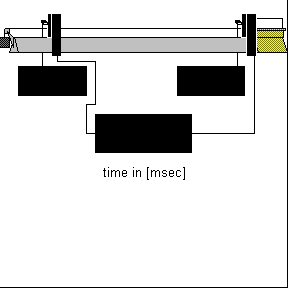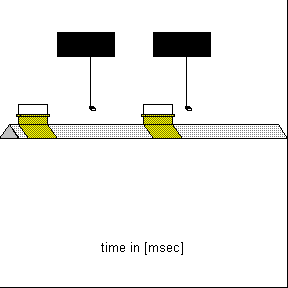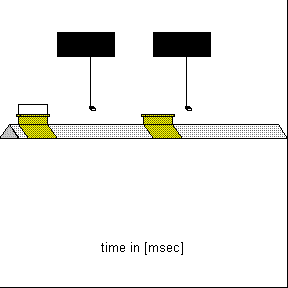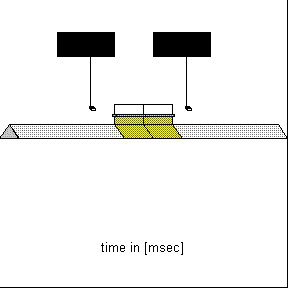M.4.1 Dynamics Track
In addition to its usefulness in qualitative demonstrations of linear motion and collisions the dynamics track shown below can be used in conjunction with Data Studio and a motion sensor to measure and plot the position, velocity and acceleration of a Pasco cart as a function of time.

In the following Data Studio experiment for constant linear motion, the Pasco track was propped up slightly on one end with adequate metal slugs to compensate for friction. Then the cart was given a slight push to achieve constant velocity. The motion sensor was used to measure and graph the cart's position as a function of time. The graph shows that the position changes linearly as a function of time. A linear fit to the position vs. time curve gives the slope to be 0.45 m/s. This constant value corresponds to the average and instantaneous velocities for this experiment. Furthermore, it is within experimental error of the mean of the velocity vs. time curve (0.46 m/s). Taking the slope of the velocity vs. time curve, we find that it is zero and therefore have zero acceleration -- also demonstrated experimentally.
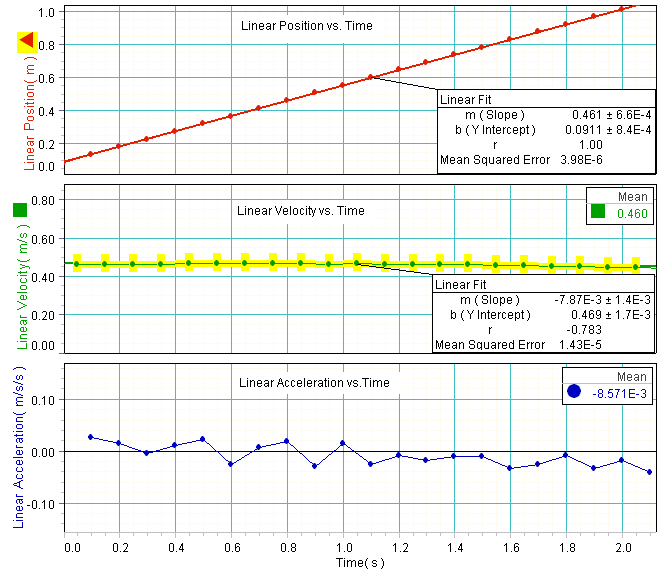
Various other linear motion demonstrations can be performed with the dynamics track which also allow for quantitative analysis. The track may be set up with two electronic timers that measure the time it takes a 10 cm flag mounted on a cart to pass in front of an infrared sensor. Thus, these timers are measuring (the reciprocal of) the velocity of the carts.
Another timer is available to measure the elapsed time for a cart to cover a given distance.
a. Newton's 1st law A cart is set moving along the track past the two velocity times. The track can be set up to compensate for friction such that the velocity of the glider remains essentially constant.
b. Gravitational Acceleration If one end of the track is raised slightly, measurements can be taken of a cart accelerating down the track.
c. Newton's 2nd Law A ribbon is attached to a cart and passed over a frictionless pulley to a falling weight. By varying the mass of the weight and the cart, measurements can be taken verifying Newton's 2nd Law.
d. Collisions and Explosions Elastic and ineleastic collisions between carts can be demonstrated as one end of the carts are equipped with magnets and the other end with Velcro. A moving cart collides elastically with a stationary cart of equal mass using the magnetic ends. The originally stationary cart moves away with all the velocity. Completely inelastic collisions result by colliding the Velcro ends of the carts. A carts velocity is measured before and after it has collided inelastically with another cart of equal mass. It is demonstrated that the velocity of the two carts after the collision is half the initial value.
Explosions are demonstrated by touching the ends of two carts together and releasing an internal plunger from one of the carts.
All of the above demos may also be demonstrated with the air track at the instructor's request. The air track has an advantage over the dynamics track in that there is less friction associated with it. However, the air track has a draw-back in that it is much noisier than the dynamics track and in a lecture setting it is difficult for the instructor to be heard.
|
|
